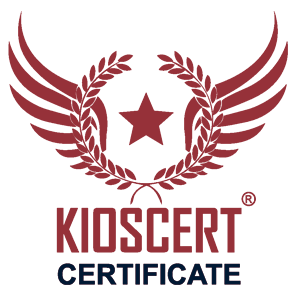
Basic Principles of ISO 9001
ISO 9001 is the most widely implemented quality management system standard worldwide. At its core, seven main quality principles are established, aiming not only to enhance the quality of products or services but also to increase customer satisfaction and employee engagement. These principles form the foundation of quality management systems and constitute the basis of corporate culture.
These seven principles are customer focus, leadership, engagement of people, process approach, improvement, evidence-based decision making, and relationship management. Each plays a significant role in helping businesses achieve their long-term success goals. For example, through the customer focus principle, an organization becomes responsive to market demands; the process approach ensures operations are more efficient and traceable. Leadership enables the creation of a shared vision within the company.
The 7 Quality Principles of ISO 9001
- Customer focus
- Leadership
- Engagement of people
- Process approach
- Continuous improvement
- Evidence-based decision making
- Relationship management
Process-Based Quality Management Approach
One of the most notable aspects of the ISO 9001 standard is its process-based management approach. This approach enables a business to consider its activities as interconnected processes rather than separate departments. Thus, the inputs, outputs, and relationships between each process and the next are clearly defined. The process-based approach facilitates achieving quality objectives and allows more efficient use of resources.
With process management, companies can easily detect redundancies, delays, and waste in workflows. Furthermore, by measuring the performance of each process, the effectiveness of the continuous improvement cycle is enhanced. Process owners are designated to clarify responsibility for each step, strengthening both managerial control and employee engagement.
Benefits of the Process Approach
- Transparency and traceability of business processes
- Increased efficiency
- Reduction in error rates
- Clarification of responsibilities
- Improved effectiveness in decision-making processes
Implementing Risk-Based Thinking
With the ISO 9001:2015 standard, the concept of "risk-based thinking" was integrated into quality management systems. This concept encourages organizations not only to react to problems after they occur but to anticipate risks in advance and take proactive measures. In other words, necessary analyses are conducted before issues arise, and processes are shaped in accordance with these risks.
Risk-based thinking should be applied at all management levels, from corporate strategy setting to operational decision-making processes. Identifying potential risks and opportunities for each process increases the resilience of the quality management system. Additionally, this approach helps prevent situations that could jeopardize customer satisfaction in advance.
Implementation Steps
- Performing risk and opportunity analysis for each process
- Defining relevant control measures
- Determining monitoring methods to track risks
- Establishing a continuous update and evaluation cycle
Customer Focus and Continuous Improvement
At the heart of ISO 9001 lies the concept of “customer satisfaction.” The ultimate goal of the quality management system is to meet customer needs and exceed expectations. In this context, businesses should continuously monitor customer complaints, feedback, and market analyses, shaping quality objectives based on this data.
Continuous improvement ensures the quality management system remains dynamic and open to development. Organizations should regularly measure performance across many areas—from product quality to internal communication, process efficiency to customer relations—and systematically implement improvement activities.
| Area of Improvement | Recommended Action |
|---|---|
| Customer Complaints | Strengthening the feedback system |
| Product Quality | Applying statistical quality control methods |
| Internal Processes | Value stream analysis and process revision |
| Employee Engagement | Establishing improvement suggestion systems |
Internal Audit Planning and Execution
One of the cornerstones of the ISO 9001 quality management system is internal audit activities. Internal audits are conducted to verify whether the quality system operates in accordance with established criteria and to provide data for continuous improvement. This process allows the organization to audit itself, identify weaknesses, and initiate corrective actions.
For an effective internal audit process, an annual audit plan should first be prepared, covering all departments comprehensively. Auditors must be independent and impartial and support the process with documentation. Data such as each department’s performance, frequency of nonconformities, and risk levels should be analyzed and reported, then included in improvement plans. Audit results should be presented to senior management, contributing to strategic decision-making processes.
Internal Audit Cycle
- Creating the audit plan
- Assigning competent internal auditors
- Preparing checklists and record forms
- Conducting interviews, observations, and document reviews
- Reporting, analyzing, and following up on corrective/preventive actions
Certificate Validity and Traceability with KIOSCERT
For organizations, the ISO 9001 certificate should not be just a piece of paper. The validity and traceability of the certificate demonstrate that the management system is genuinely implemented and sustainable. Accredited certification bodies like KIOSCERT ensure that the certificates they issue are recognized nationally and internationally.
An organization holding an ISO 9001 certificate must maintain its validity throughout a three-year audit cycle. During this period, annual surveillance audits are conducted to seek evidence of continuous system functionality. Certificate validity can be easily verified through online validation systems. These systems enable suppliers, customers, and partners to authenticate the certificate.
Thanks to KIOSCERT’s digital certificate tracking infrastructure, companies can monitor certificate history, scope, and validity in real-time. This transparency creates a significant advantage in terms of customer trust. At the same time, it supports embedding a quality culture within the corporate memory.
